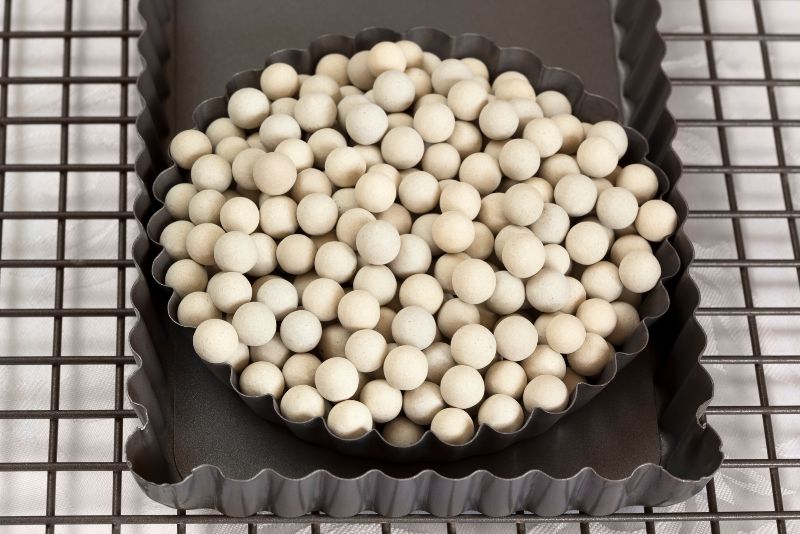If you’re an avid baker, you know the importance of keeping pie crusts looking nice and crisp during baking. Regularly using pie weights guarantees the job gets done, but what if a traditional bag of weights isn’t available? Have no fear! Believe it or not, there are plenty of substitute for pie weights – each offering its own unique set of benefits for the home chef.
Table of Contents
10 Substitute for Pie Weights
The best substitutes for pie weights are dried beans and uncooked rice. You can also use steel balls, baking chains, and metal chains as pie weight substitutes.
Keep reading to explore the various substitutes for pie weights and determine which one works best for you!
1. Dried Beans
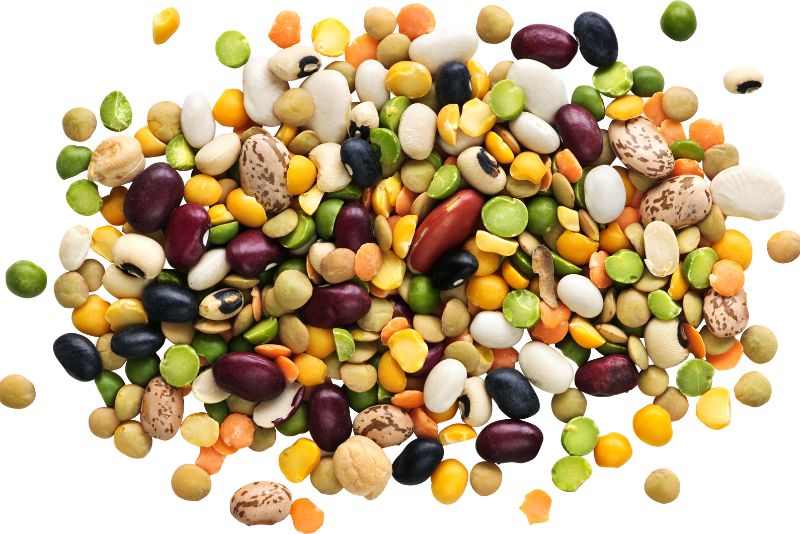
Dried beans are a great replacement because they closely resemble pie weights in shape and size. If properly maintained in an airtight container, these beans won’t make a mess if spilled, can withstand high temperatures, and can be used repeatedly.
Beans of most types function well. Because they are huge, heavy, and simple to separate from the pastry, black beans, pinto beans, and kidney beans are particularly suitable.
Dried beans should not be consumed or utilized again as a cooking component after being used as pie weights. The texture and flavor of the beans change as a result of drying out as they cook more.
2. Uncooked Rice
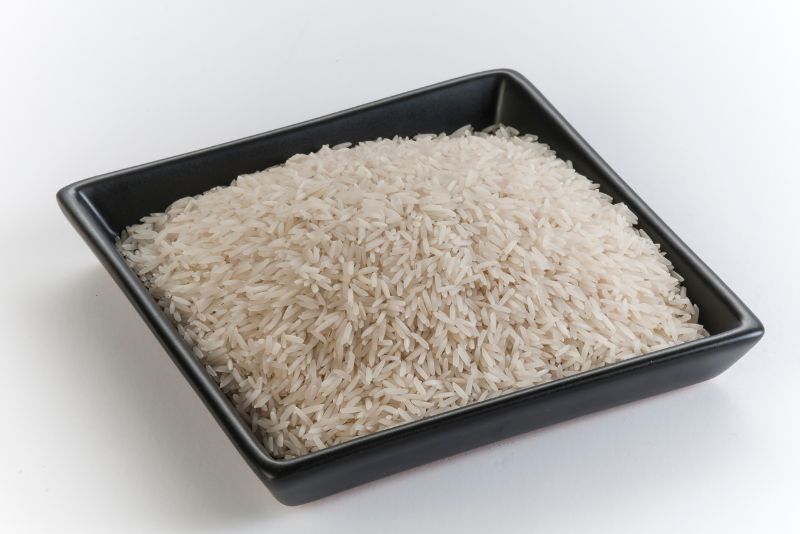
Uncooked rice is easily accessible, reasonably priced, and may be layered evenly across the top of a pie shell. Because rice can withstand high temperatures without significantly changing in texture, flavor, or color, it can also be used as a culinary ingredient again thereafter. All varieties of rice are acceptable.
Small rice grains should be handled and prepared for blind baking with additional care because of their size. The grains are difficult to see and, if spilled, can be very dirty.
3. Steel Balls
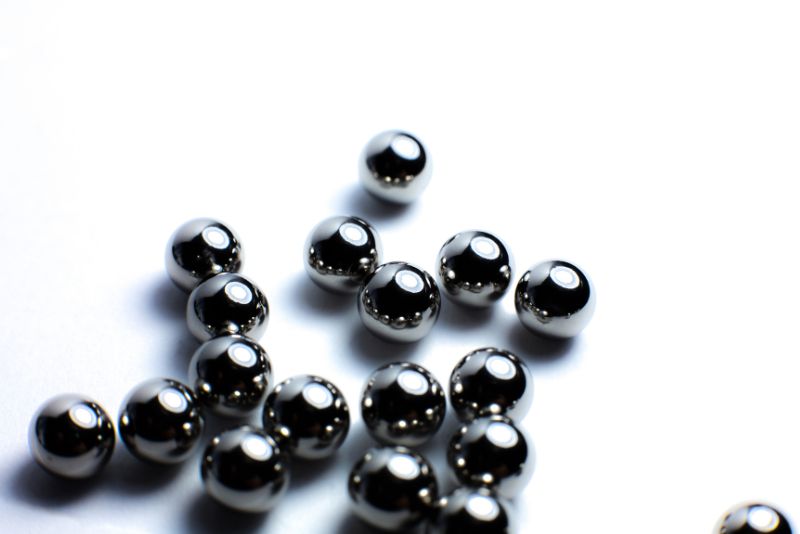
The additional benefit of keeping the crust’s shape and transmitting heat is provided by little steel balls.
As a result, the crust bakes more evenly from the inside out. The secret to blind baking a fantastic pie crust, according to a few outstanding bakers, is to do this. However, since the balls will aid in baking the crust, you must slightly adjust your baking time.
Make use of a little ball. They’ll better fill the crust. Steel balls are fairly comparable to aluminum pie weights if you’re used to using them. Any steel things you use should be oven-safe and clean.
Steel balls are fantastic since you can reuse them repeatedly. No matter how many times you bake with them, they’ll never go bad. Make careful to pair steel with parchment paper. Since they carry heat, foil is not necessary.
4. Popcorn Kernels
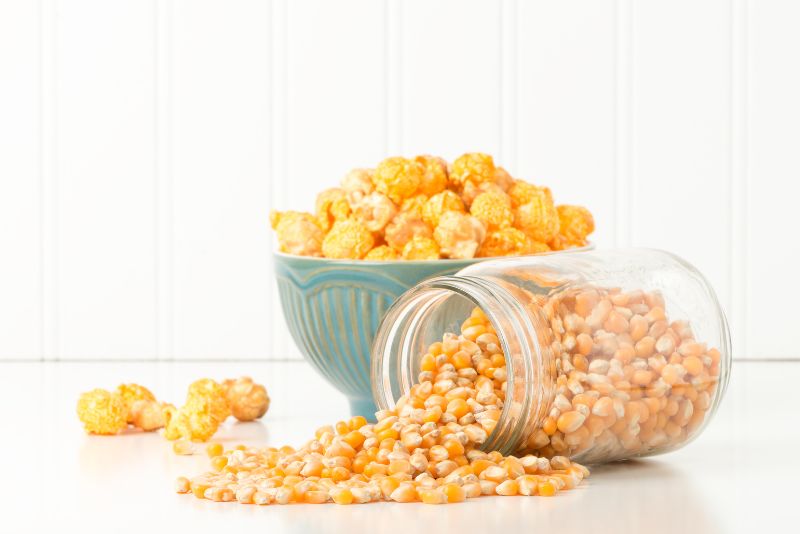
For pie weights, a bag of popcorn kernels works just as well. They function equally well, bake the crust evenly, and maintain excellent form.
Popcorn kernels differ from dried corn in several ways. Popcorn is only created from one type of maize kernel, Zea mays everta. Although it appears to be an ordinary corn kernel, it is the only one that can pop open to reveal a tasty treat. Popcorn kernels and ordinary corn are excellent alternatives for pie weights.
I advise using foil as a liner, just like you would with other dry pie weight alternatives.
Popcorn kernels can be used as pie weights, however their small size is the only drawback. This might make cleanup more difficult. When I bake, I usually manage to get the small components like rice, sugar, or kernels all over the place. However, they are inexpensive, and you may store and use them often.
5. Sugar
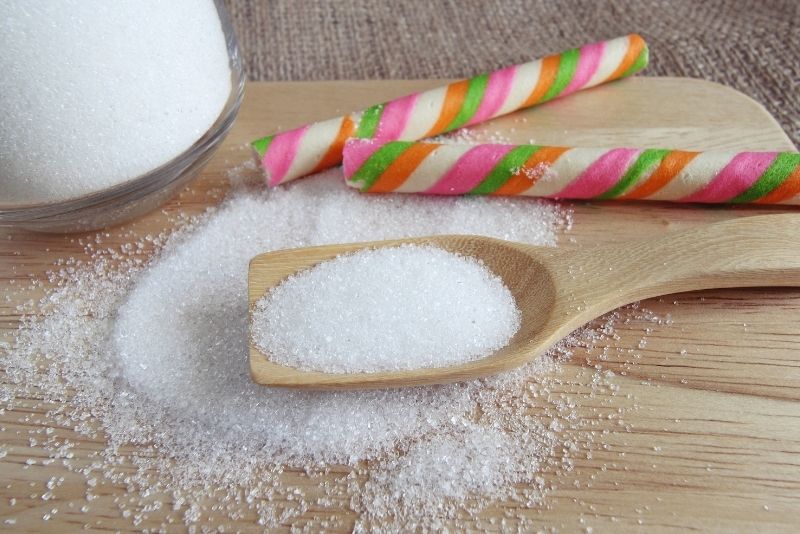
Every baker’s cupboard, including mine, has sugar, which is a basic component. Fill the pie crust with sugar and then simply shape some aluminum foil around it and up the sides.
Very fine sugar evenly covers the entire pie shell. This guarantees that the dough will be held firmly in place and baked evenly. I always achieve excellent form and a gorgeous golden brown color when I blind bake a pie using foil and sugar. It always works.
The ability to use sugar in other recipes is one of the best aspects of utilizing it. But I advise keeping it to a couple of blind bakes. The flavor will be toasted caramel, which complements various dishes.
Pie weights can be easily replaced with granulated sugar, but that’s okay. The better a pie weight, the smaller it is, but the messier it is to clean up. I always manage to get sugar on my crusts and other surfaces. Although it’s not necessarily a terrible thing, you’ll need to exercise extra caution.
Because sugar is so fine, it offers a highly even coating with a substantial quantity of weight. This maintains the crust’s shape and guarantees an even bake. Because I detest wasting things, I also appreciate that I can use the sugar again in the future.
I advise using aluminum foil rather than parchment paper if you decide to experiment with sugar as a pie weight substitute. I always get the greatest color from foil. The best way to keep sugar from the crust is with parchment paper, however I never achieve the same level of browning as when I use foil.
The foil’s ability to conduct heat, combined with the sugar’s consistent weight and fine texture, aids in baking the crust uniformly.
6. Marbles Or Smooth Stones
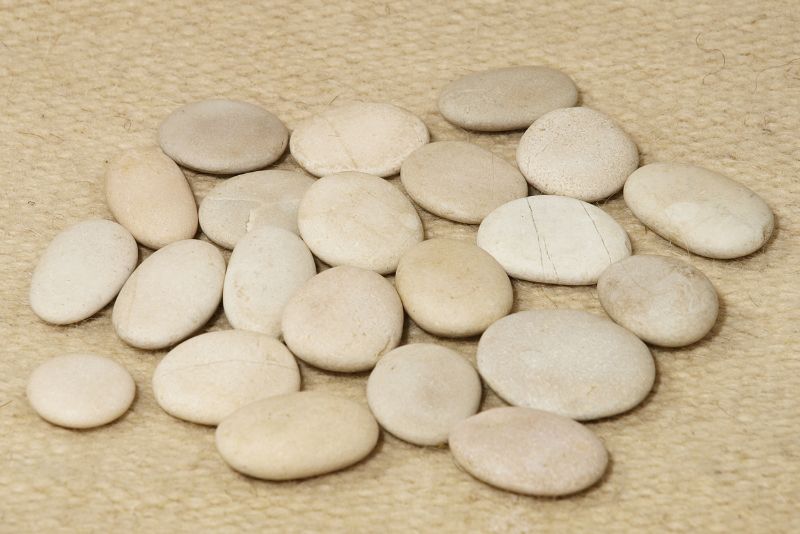
Marbles or smooth stones work incredibly well as pie weight alternatives. Marbles are heat-resistant, spherical, uniform in size, and a decent weight. Be cautious to use genuine marbles rather than cheap plastic ones.
Use a miniature marble, about the size of a steel ball or dried bean. not those enormous marbles with a diameter of around 1 inch. The heat that marbles absorb and transmit will help bake the crust from the inside out.
For stones, such as those you obtain from a rock tumbler, a pie weight works nicely. Use only rocks without shard edges, please. They must be completely smooth. Because they effectively absorb and distribute heat, stones aid in crust baking. When setting the timer, be careful to keep this in mind.
Along the bottom and sides of the crust, I use parchment paper. The stones and marbles will aid in the crust’s baking because they absorb and reflect heat. Place the paper inside and then equally distribute stones or marbles around the crust.
Make sure to fill the crust with the least amount of voids possible if the stones are unevenly shaped, which they almost certainly will be.
You can arrange stones along the bottom and side walls of the crust because they are typically uneven. They are therefore a little more manageable than marbles and the majority of other pie weights. With other weights, the pie must be completely filled to support the sides.
7. Baking Chain
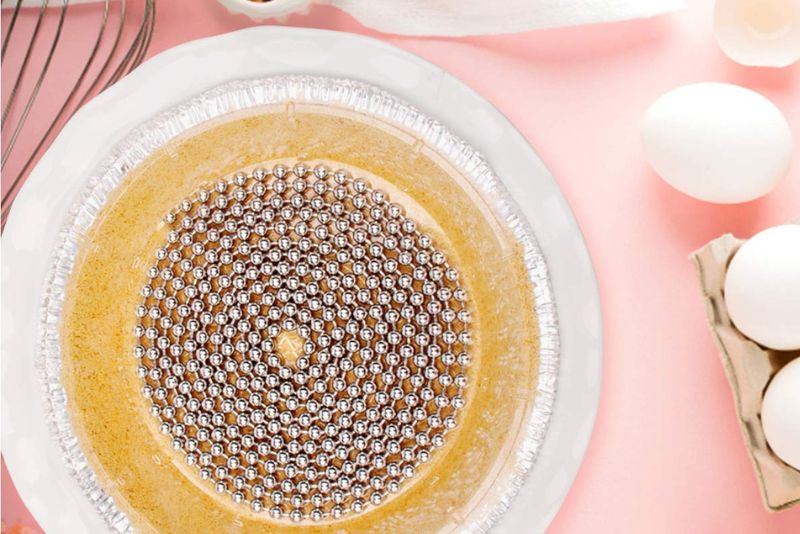
Although they are light, baking chains can be used as a substitute for pie weights. They lack the pie weight’s weight component. The biggest drawback of employing them is that.
The chain should be wound as evenly as you can inside the pie crust. The chain is connected, so unlike marbles, dry foods, stones, sugar, or steel balls, it won’t spontaneously fill the gap. It takes longer to do this than it would be to simply add sugar into the liner.
Pay close attention to the sides, as the crust needs support there. The sides may cave in completely if no pressure is applied. The chain typically breaks here. But if you’re cautious about how you coil it into the crust, you can make it work. Ensure that pressure is applied to all of the edges.
Pack the pie dough securely since it may bubble up between the coils of the pie chain. Make sure to uniformly cover the sides and bottom of the container. Uneven baking may arise if gaps are left in the chain.
To be quite honest, handling baking chains isn’t my favorite job. However, they function just as well if you take your time coiling them into the crust. I’ve used them successfully in the past, but the extra time required is time I’d rather spend baking.
Chains have the benefit of being easy to tidy up. Spills of ingredients shouldn’t be a cause for concern. They also have an unlimited capacity for reuse.
Depending on the chain, I might use foil or parchment paper as a liner. If the chain was heavy, I would use paper because a heavy chain will conduct heat more efficiently. However, if your chain is very light, I would recommend using foil.
8. A Smaller Pie Form
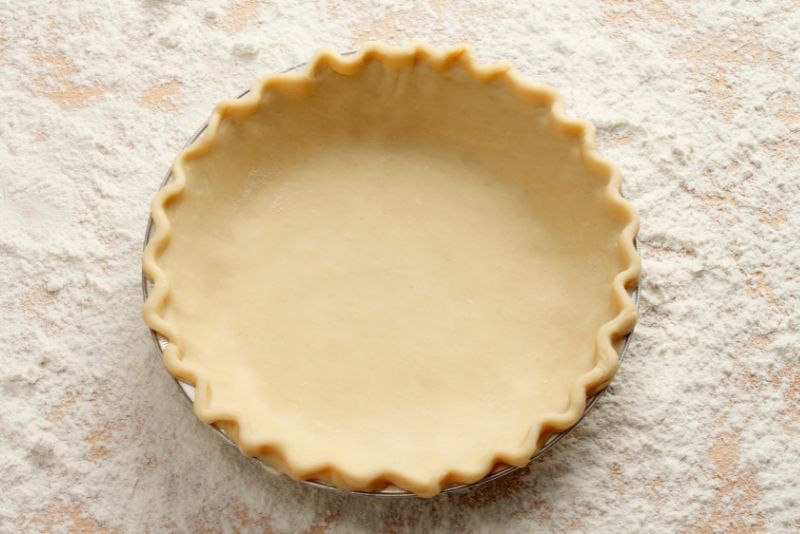
A smaller pie form is another of my favorite alternatives to pie weights. Use foil or parchment paper first, if possible. The smaller pie dish should then be placed within the pie dough. The top dish will maintain its shape and prevent the bottom crust from ballooning up.
The pie crust can be inverted and baked upside down on a baking sheet when you use two forms. The crust is held together by gravitation. This technique works well, but because the upper crust edges are resting on the tray’s surface, they have a tendency to flatten out. Some of my pies look nice, but not all of them. Try it out and let us know what you think.
In order to prevent puffing and side shrinkage, use a smaller pie pan as a weight. Just be certain that the two pie forms have the exact same shape but different sizes. The crust could swell enough to fill any gaps between the second form and the crust.
A metal pie shape will conduct some heat if you use one. I like to do it this way. The crust gets a wonderful brown color and a good crisp when baked from the inside out. Because you get metal carrying heat and an equal pressure all around the edges and bottom of the crust, it is comparable to employing foil and sugar.
In this instance, I substitute a parchment paper lining with foil. Foil is used instead if I’m using a pie plate that doesn’t conduct much heat.
9. Pennies
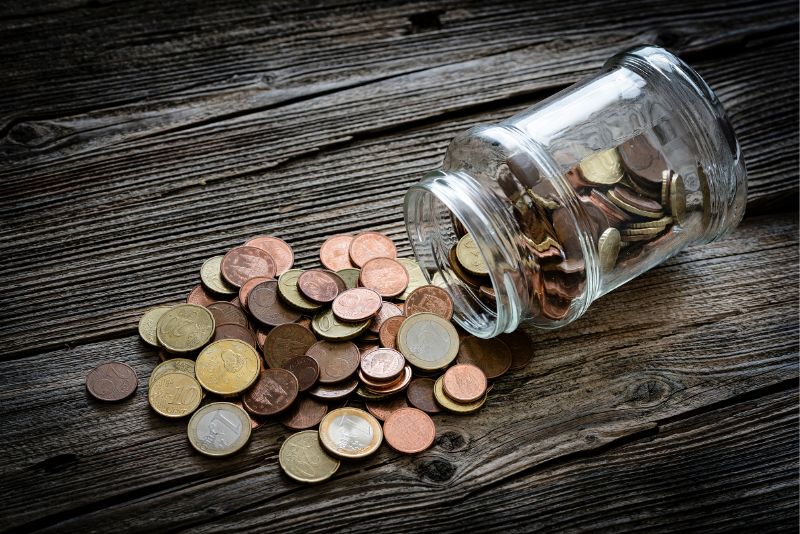
Although unusual, pennies work well as pie weights. Pennies are homogeneous in shape, somewhat heavy, and effectively conduct heat. Additionally, only a few pennies are needed to cover the pie crust’s entire surface.
Despite not being as sloppy as sugar and rice, pennies still need to be well cleaned before use. Using at least two layers of liner will help to ensure that the coins won’t come into contact with the pastry. Pennies can also stain food they touch and lend a metallic taste.
Coins are the ideal substitute for pie weights when they are not easily accessible. This is due to the fact that they have a flat side, which means they won’t pierce your crust or add undue weight to it. While any coin will work for this, quarters are typically the best choice.
Make sure the dough is the proper thickness before placing two or three quarters inside the filling to serve as pie weights. For additional weight, you may also sprinkle some dried beans or grains on top.
10. Metal Chain
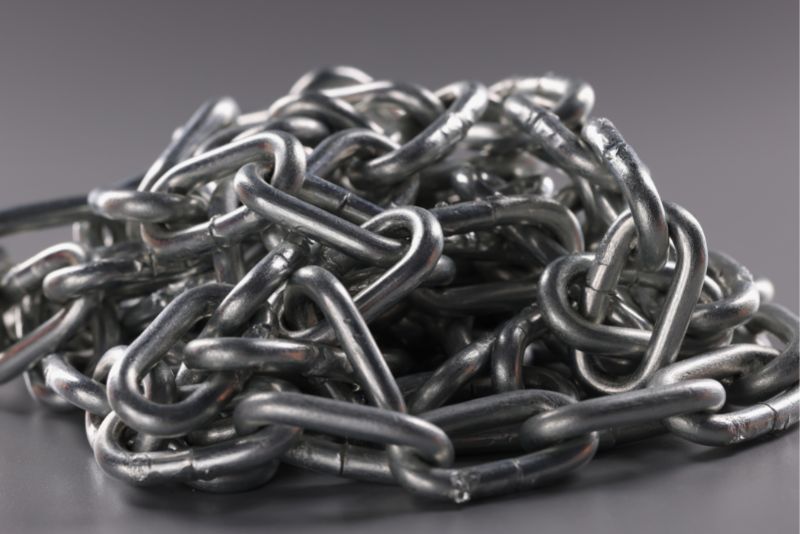
Pie weights are a great alternative, but if you can’t find any, metal chains are the ideal replacement.
They are excellent for preventing your dough from inflating up without adding too much weight. Put metal chains on on top of the pie crust and store it in the refrigerator or freezer until you’re ready to bake.
Metal chains as pie weights have the key benefit of being reusable multiple times, which saves you money.
What Do Pie Weights Look Like?
Pie weights are tiny ceramic or metal balls used specifically to weigh down your pie dough while it is being baked in the blind. This maintains the flat, level pastry that will serve as the bottom of your pie, resulting in layers of crust and filling that are smooth and even.
FAQs
1. What is a pie weight?
Pie weights are tiny ceramic or metal balls used specifically to weigh down your pie dough while it is being baked in the blind. This maintains the flat, level pastry that will serve as the bottom of your pie, resulting in layers of crust and filling that are smooth and even.
2. What size are pie weights?
The most popular kind of pie weights are nothing more than a mass of simple ceramic balls with a diameter of about 3/8 of an inch.
3. What can be used instead of pie weights?
You can substitute pie weights with dried beans, dried rice, granulated sugar, and popcorn kernels.
4. What are pie weights made out of?
You have choices when it comes to the kind of pie weights to utilize. Metal chains and ceramic balls are both coiled inside the pie crust and are joined together, making them easier to remove.
